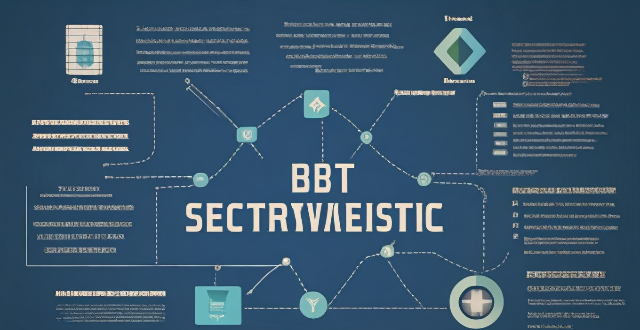This article discusses some of the best tools and technologies for network security protection. The list includes firewalls, intrusion detection systems (IDS) and intrusion prevention systems (IPS), virtual private networks (VPNs), antivirus and anti-malware software, next-generation firewalls (NGFWs), network access control (NAC), and security information and event management (SIEM). These tools and technologies can help organizations protect their networks from unauthorized access, data breaches, and other cyber threats. However, it's essential to remember that no single tool or technology can provide complete protection on its own. A layered approach combining multiple solutions is often the most effective way to safeguard your network against today's complex threats.

Best Tools and Technologies for Network Security Protection
Network security protection is a critical aspect of any organization's IT infrastructure. It involves safeguarding the network from unauthorized access, data breaches, and other cyber threats. To achieve this, various tools and technologies are used to enhance network security. In this article, we will discuss some of the best tools and technologies for network security protection.
1. Firewalls
A firewall is a network security system that monitors and controls incoming and outgoing network traffic based on predetermined security rules. It acts as a barrier between your internal network and the internet, protecting your systems from external threats. There are two types of firewalls: hardware firewalls and software firewalls. Hardware firewalls are typically built into routers, while software firewalls are installed on individual computers or servers.
Key Features:
- Packet filtering
- Stateful inspection
- Application layer filtering
- Intrusion detection and prevention
2. Intrusion Detection Systems (IDS) and Intrusion Prevention Systems (IPS)
An Intrusion Detection System (IDS) is a device or software application that monitors network traffic for malicious activities or policy violations. When an IDS detects a potential threat, it sends an alert to the system administrator. On the other hand, an Intrusion Prevention System (IPS) takes action to block or prevent the detected threat from causing harm.
Key Features:
- Signature-based detection
- Anomaly-based detection
- Heuristic-based detection
- Real-time threat blocking
3. Virtual Private Networks (VPNs)
A Virtual Private Network (VPN) is a secure tunnel between two or more devices that encrypts all transmitted data. VPNs are commonly used to protect remote access connections, allowing users to securely connect to their organization's network from anywhere in the world. VPNs can also be used to create private networks within public networks, such as the internet.
Key Features:
- Encryption
- Authentication
- Authorization
- Tunneling protocols
4. Antivirus and Anti-malware Software
Antivirus and anti-malware software are essential tools for protecting against viruses, malware, spyware, and other malicious software. These programs scan files and processes on your computer or network, identifying and removing any threats they find. They can also provide real-time protection by monitoring your system for suspicious activity.
Key Features:
- On-demand scanning
- Real-time protection
- Automatic updates
- Quarantine and removal capabilities
5. Next-Generation Firewalls (NGFWs)
Next-Generation Firewalls (NGFWs) are advanced firewalls that combine traditional packet filtering with additional features like application recognition, intrusion prevention, and threat intelligence. NGFWs can identify and block sophisticated attacks that traditional firewalls might miss, providing a more comprehensive level of protection for your network.
Key Features:
- Deep packet inspection
- Application layer filtering
- Threat intelligence integration
- Advanced malware protection
6. Network Access Control (NAC)
Network Access Control (NAC) is a technology that restricts access to network resources based on the status of the connecting device or user. NAC checks the health of the device or user before granting access, ensuring that only compliant devices are allowed onto the network. This helps prevent infected devices from spreading malware or other threats throughout the network.
Key Features:
- Device health checks
- User authentication
- Policy enforcement
- Guest networking
7. Security Information and Event Management (SIEM)
Security Information and Event Management (SIEM) is a solution that aggregates log data from various sources across your network, providing real-time analysis of security events. SIEM systems can detect patterns and anomalies in network activity, helping you identify potential threats before they cause damage. They also provide valuable insights into your overall security posture, enabling you to make informed decisions about how to improve your defenses.
Key Features:
- Log aggregation
- Real-time event analysis
- Correlation and alerting
- Compliance reporting
In conclusion, there are many tools and technologies available for network security protection. By implementing these solutions, organizations can significantly reduce the risk of cyber attacks and data breaches. However, it's essential to remember that no single tool or technology can provide complete protection on its own. A layered approach combining multiple solutions is often the most effective way to safeguard your network against today's complex threats.